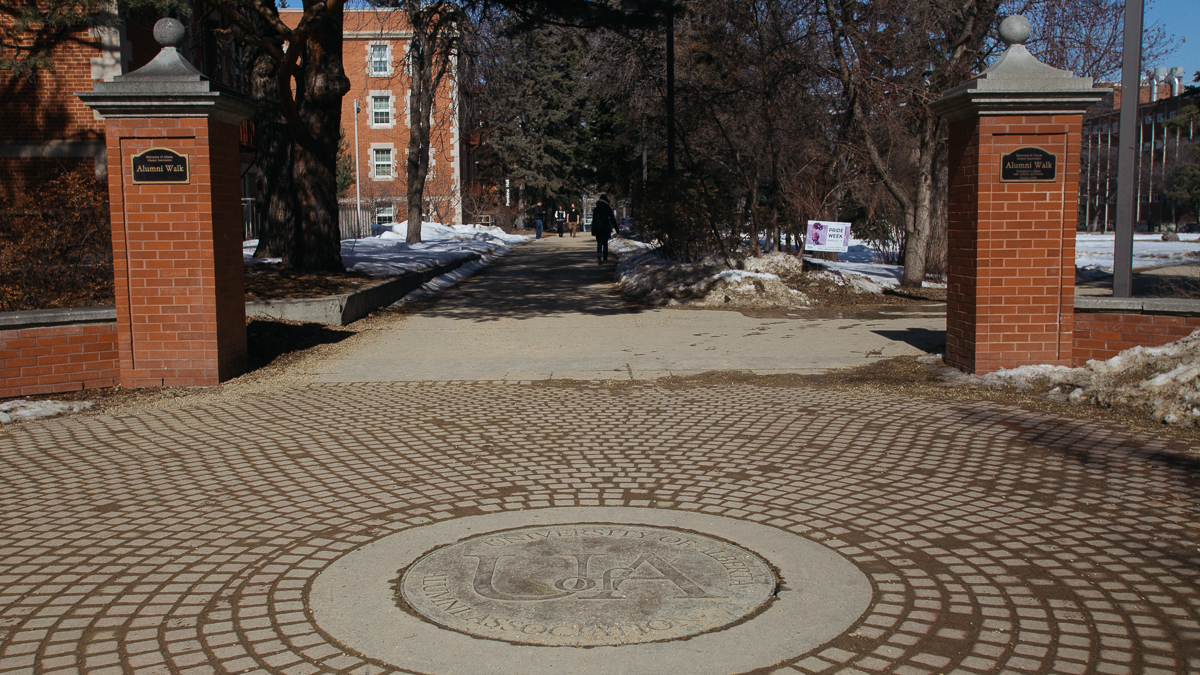 Rosty Soroka
Rosty SorokaStudents roaming the halls of Humanities, Tory, and FAB on the Monday after reading week stumbled across a purply poster whose contents will radically alter their academic lives: The Faculty of Arts has publicly announced the requirements of the new Bachelor of Arts. The new requirements will apply to all incoming students and current students can opt to switch into the new program so long as they are graduating after Winter 2018.
There have been some issues with the rollout; I’ll address these quickly since my main concern is with the content of the new degree itself. In my view, the first concern is legitimate, the second not so much.
First, the faculty’s online tip sheet has some errors: failing to include the interdisciplinary majors in Religious Studies and Environmental Studies, saying on the first page that all majors must be in Arts while listing “Sciences: Mathematics” as a possible major on the second, and omitting the commas in “Science, Technology, and Society.” While these might be nitpicky issues, I’m not impressed that the faculty would miss these errors in such a crucial announcement.
Second, some students expressed surprise at the “sudden” changes – Students’ Union vice-president (academic) Shane Scott, for instance, said “The faculty should step up and own the fact that they should have been communicating the changes earlier” — but such reactions are mistaken. The faculty conducted numerous town halls, surveys, and other feedback measures as it drafted the new BA under the scrutiny of professors, staff, and students. The Dean of Arts, Lesley Cormack, has indicated her administration’s plans to grandfather current students into the new program as early as her Faculty Address in September 2017. Rolling out expansive program changes across the board is undoubtedly an administrative challenge, especially considering the intricacies of academic advising services and the glacier-slow bureaucratic procedure of the university. We ought to have a critical conversation about the University’s onerous deliberative processes, but in this particular case, due diligence and careful planning seems appropriate. The news that the faculty has relaxed students’ degree requirements should not be the target of their frustration — after all, surely it’s welcome news for those who’d rather not fill all the old requirements!
Rather, any frustration over the new BA should be with its revised requirements themselves. Don’t get me wrong — many of the changes are sensible. For Arts students, who often write copiously in their other classes, the trimmed down English requirement frees up their timetable while still providing the orientation in textual analysis and writing skills this requirement purports to provide. Generally speaking, the expansion of the Sciences credit requirement to all non-Arts Faculties (with the exception of Native Studies) enables students to more flexibly explore non-Arts disciplines without defeating this requirements’ purpose of intellectual diversification (although one consequence is that Dance, being a subject in the Faculty of Kinesiology, Sport, and Recreation, will count as a non-Arts credit).
But where the new BA goes wrong is in gutting the Breadth and Diversity requirements. These requirements achieved a crucial function in the old (current) BA, compelling students to explore Arts learning beyond their major and minor. Exposing students to a variety of methodologies, topics, and viewpoints is fundamental to a liberal arts education: encountering different approaches to the questions of human creativity, sociality, and ingenuity is bound to enrich one’s understanding of one’s own disciplinary approaches. Arts departments shouldn’t run the risk of siloing themselves. Of course, in the new BA the 48-credit cap in one’s major continues to press students to sample different subjects – but it’s still possible for students to stay in their broad disciplinary area. A psychology student, for instance, could comfortably constrict their learning within neighboring disciplines, like sociology and anthropology, rather than reaching across the aisle, say, to philosophy or women and gender studies or music. Instead, our faculty should challenge us to move out of our comfort zone to even wildly alien avenues of knowledge. Fine arts students benefit from the intellectual rigour of the humanities and social sciences. Social sciences students benefit from the humanities’ theoretical foundations and the fine arts’ creative possibilities. And humanities students benefit from the social sciences’ quantitative rigour.
I have a friend in a fine arts program who’s taking a philosophy course for the first time, just over halfway through her degree. When we talked about the course, she said, “This makes me want to take a philosophy after degree!” This makes my heart sing. The continual discovery of new ways of knowing — new things to be excited about — that’s what makes liberal arts education uniquely valuable.
To achieve the flexibility of the new BA while preserving the rigour of the old, the faculty ought to have cut the Breadth and Diversity requirements in half, requiring three credits in each area rather than six. But they instead chose convenience over pedagogy, designing a “student-friendly” degree which erodes the comprehensive, big-picture ethos of the liberal arts.
At any rate, at least I can take dance for my non-arts credit.




